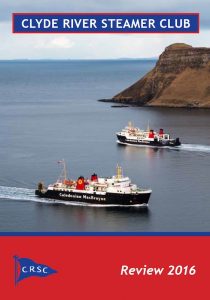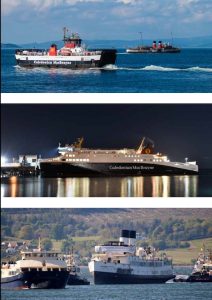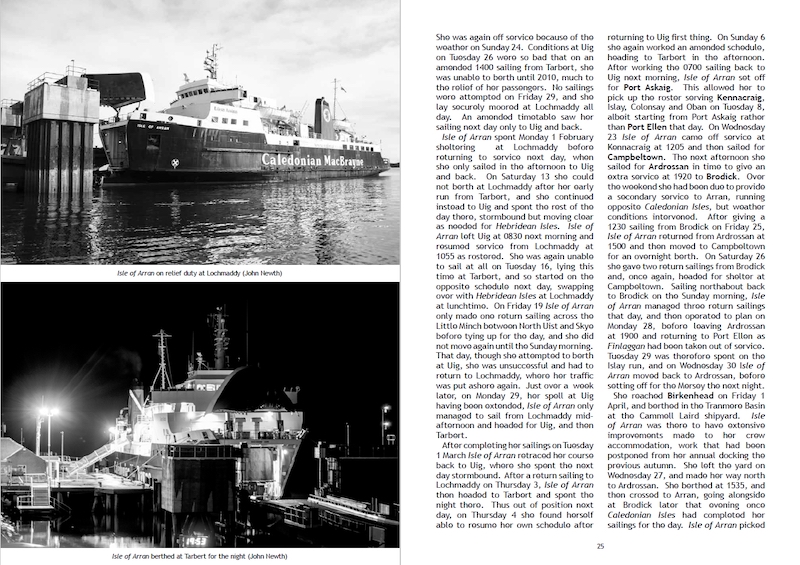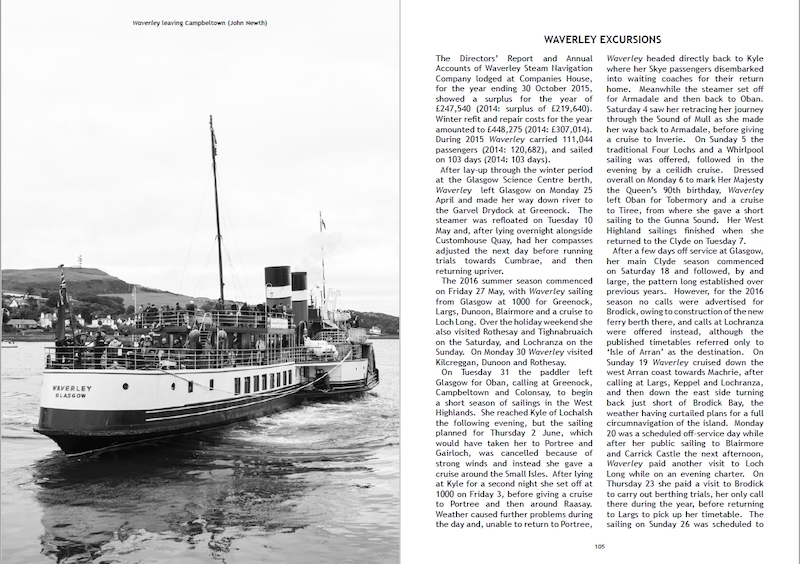The long-awaited Review 2016 will soon be dropping through the post-box of CRSC members.
The 128-page volume gives a unique and comprehensive overview of ship movements and ferry-related political developments over a 12-month period, adding up to an invaluable resource for enthusiasts, professionals and historians alike.
What the 2016 edition of CRSC’s Review confirms is that this was an exceptional year in its scale of activity, embracing
- the announcement that CalMac had won the new contract for Clyde and Hebridean services (19 May), with all the attendant hoo-ha before and after
- the introduction of Catriona and the resulting changes at Lochranza
- the full effect of RET across the network, prompting a reshuffle of many fleet members, including Coruisk to Oban-Craignure and Lochinvar to Mallaig-Armadale, the latter prompting Isle of Cumbrae’s permanent return to Tarbert-Portavadie
- Isle of Lewis’s full-time assignment to the Barra-Oban run, and Lord of the Isles’ to Lochboisdale
- Queen Mary’s return to the Clyde after a Thames sojourn lasting 35 years
- the re-opening of Wemyss Bay pier after lengthy closure, during which it received a £3m upgrade
- Balmoral’s short Clyde season at the end of the summer
Review 2016 has more than 46,000 words and 100-plus illustrations — among them Isle of Arran on her Uig triangle escapade and the ‘new order’ at Oban (including Isle of Lewis and Coruisk).
This is the last edition of CRSC’s annual shipping review to be compiled by John Newth.
It has been put together with his customary meticulousness and consistency, and the delay in its publication is no reflection on the thoroughness or comprehensiveness of his work.
John took on the job of compiling the annual Review in 2007, so this is his 10th edition: CRSC owes him a big debt of gratitude. Few realise that, even before the compiler starts the mammoth task of organising all the information at the end of the year, the process of monitoring developments demands daily attentiveness throughout the preceding 12 months.
John says the biggest change since 2007 has been the sourcing of facts: his predecessors (Iain MacArthur, Robert Cleary, Ian McCrorie and Stuart Craig) relied on information received direct from CalMac, as well as from hard-copy press reports and details sent in by members.
Today’s press coverage is digital — more up-to-the-minute, more handily available. In 2007 there was no AIS vessel tracking; social media barely existed. Compare that with Review 2016, where all of the detail has come from what John cryptically calls his “myriad sources”.
He says that, despite the workload (on top of a full-time job), he has always enjoyed collating the information and selecting illustrations for the Review, “and even the detective work proved a pleasurable challenge. It was fascinating to see it all come through the various stages of proofing and on to final publication.”
During his decade in charge John remained faithful to the traditional book format of the Review he inherited.
His successor is Douglas Allan, who hopes to produce Review 2020 by next autumn (most likely in the new A4 format of Review 2018 and Review 2019, both of which have already been published).
When Review 2017, currently under preparation, is sent to members in the spring of 2021, the sequence will be fully up-to-date.
Paid-up CRSC members automatically receive their Review free of charge. Members who have not yet paid their 2020-21 subscription should do so here without delay.
Non-members can secure their copy of Review 2016 by signing up for the Club’s introductory £10 subscription here — a bargain!
Review 2016 alone is worth a lot more than that.
New subscribers automatically get the full benefits of membership, including reduced-price photo/DVD offers, access to hundreds of rare photographs on the CRSC website’s ‘members only’ pages, plus a copy of Clyde Steamers, the Club’s highly-prized 56-page colour magazine.
Don’t miss out on Review 2016. There has never been a better time to become a CRSC member.
Published on 6 December 2020

















